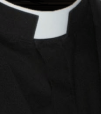The recent statement by the Doctrinal Committee of the United States Conference of Catholic Bishops (USCCB) that Professor Elizabeth Johnson’s book, Quest for the LivingGod: Mapping Frontiers in the Theology of God, does not reflect authentic Catholic teaching about God and that it should not be used as a textbook in college classrooms is troubling.
Faithful Catholics are right to call the Doctrinal Committee to task for several reasons. Whereas the Committee is very much within its rights to criticize the book, it apparently neglected to follow its own established procedures for such matters. At no time did the Committee notify Professor Johnson that her book was under review, but opted rather to carry out its investigation in secret. Only after publication of the Committee ‘s statement did she know that the review had been undertaken. She pointed out that the Committee attributed views to her that she did not hold nor express in her book.
What is most disquieting about this affair is that it seems to be a heavy-handed attempt at censorship. Cardinal Donald Wuerl, chairman of the Committee, suggested that Professor Johnson could have requested an imprimatur before publishing her book. Imprimatur (“let it be printed”) is a censorship word used by a diocesan bishop to declare that, in his opinion, a particular book conformed to Catholic teaching. The bishop usually entrusted the review of such a book to one of his priests, who had the title Censor Librorum, Censor of Books.
The Committee’s action and Cardinal Wuerl’s statement suggest a desire to restore the arbitrary censorship of the writings of theologians. Perhaps they believe that Professor Johnson’s book and others of which they disapprove should be placed on the discredited Index of Prohibited Books abolished by Pope Paul VI in 1966. Perhaps the Committee believes that such forbidden books should be kept, as they once were, under lock and key in university libraries, lest the students read them. What are the bishops afraid of? Are they not the prophets of doom that Pope John XXIII mentioned in his opening address to the Second Vatican Council?
This is not the first time that the Committee has blundered. In response to Jewish protests, the Committee in 2009 issued a clarification of its “Statement of Principles for Jewish-Catholic Dialogue.”
Canon Law (cc.220, 1390.2) stipulates that no one should harm the reputation of another, but the Committee has done just that. Inasmuch as Professor Johnson is recognized by her peers as one of the leading American theologians, we believe that the Doctrinal Committee owes her a public apology for mischaracterizing her work and wrongfully injuring her reputation.
Signed: Jamie Dance, Jim Alvord, Joanne Bray, Kathleen Clement, Marge Hickey, Marilyn Kirchner, John Lee, Dick Maiberger, Joe O’Callaghan, Anne Pollack, Marie Rose, Dick Vicenzi, Tony Wiggins
Letter to Maryknoll Fathers
Rev. Edward M. Dougherty, M.M.Superior General, Maryknoll Fathers
P.O. Box304
Maryknoll,NY10545-0304
Dear Father Dougherty:
We are writing to exhort you to stand firm, shoulder to shoulder with Fr. Roy Bourgeois, one of your priests, who has been threatened with excommunication by theVaticanfor his outspoken stance in favor of the ordination of women. On that account, theVaticanis demanding that you expel Fr. Bourgeois from your community.
As women, like men, are made in the image and likeness of God, we believe that they should be invited to preside at the eucharistic celebration. To continue to deny them ordination is unjust and an affront to those women, who, from the very time of Jesus, have carried out the essential task of transmitting the faith to our children.
Rather than be complicit in theVatican’s abusive condemnation of Fr. Bourgeois, this is the time to stand up for what is right. Rather than turn your back on one of your own, a long-time member of the Maryknoll family, and thus bring everlasting shame on Maryknoll’s name, we urge you and your community to rise up in his defense. When an injustice is committed, all good men and women, responding to the promptings of their conscience, will cry out in protest. Now is the time to do that. We know that you will.
May God always bless your work!
Sincerely
Jamie Dance and the following members of the Board of Directors: J. Alvord, J. Bray, K. Clement, M. Hickey, M. Kirchner, J. Lee, D. Maiberger, J. O’Callaghan, M. Rose, R. Vicenzi, T. Wiggins


